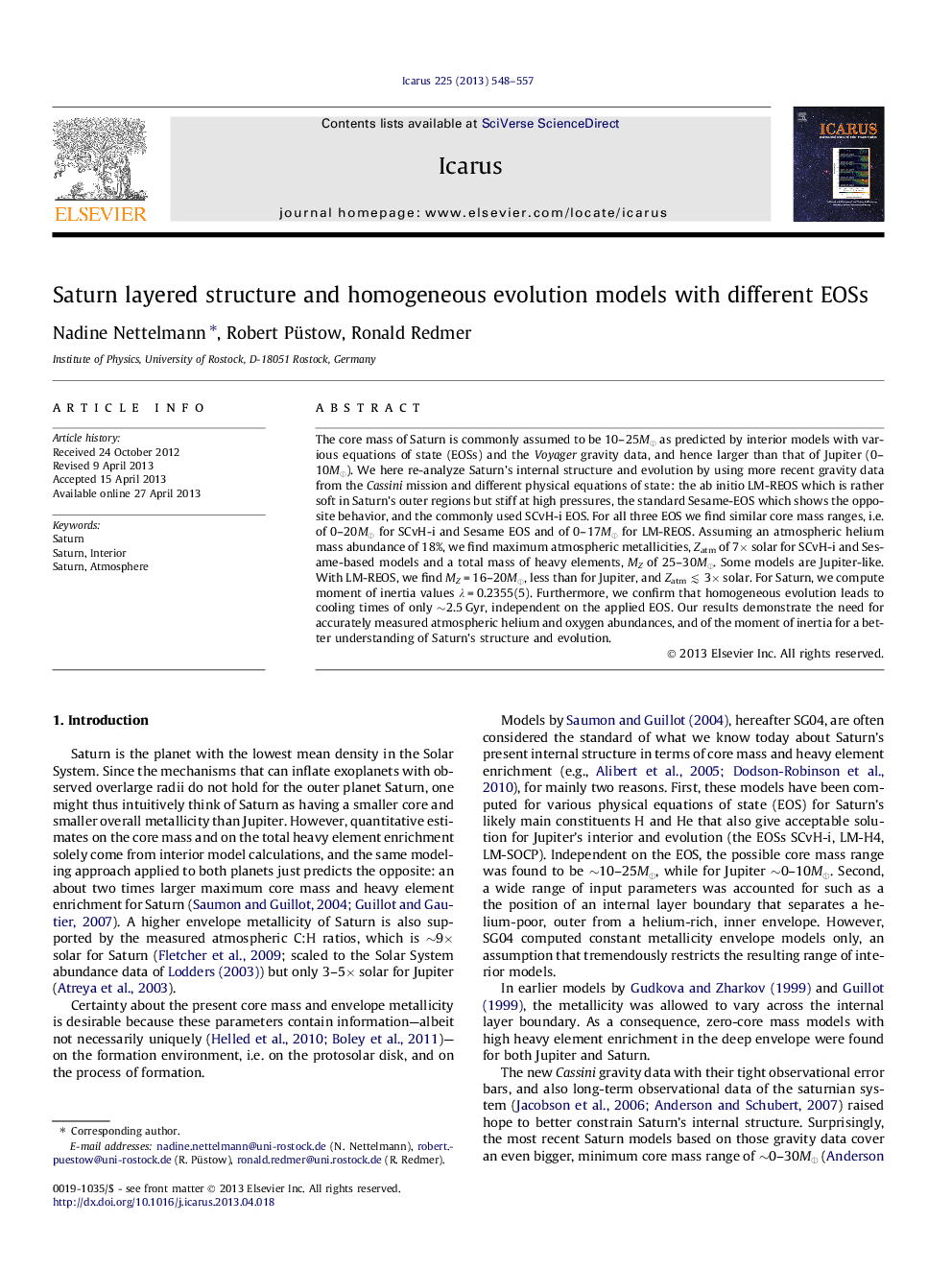| کد مقاله | کد نشریه | سال انتشار | مقاله انگلیسی | نسخه تمام متن |
|---|---|---|---|---|
| 1773226 | 1021122 | 2013 | 10 صفحه PDF | دانلود رایگان |

• Saturn’s core mass is little influenced by the H–He EOS and ranges from 0 to 20 ME.
• Our ab initio EOS data based Saturn models predict an O:H ratio of at most 8× solar.
• With Sesame and SCvHi-EOS, 2× higher atmospheric metallicities are possible.
• All our Saturn models have a rather high moment of inertia of 0.235.
• Measured He:H and O:H ratios would give important constraints for planetary models.
The core mass of Saturn is commonly assumed to be 10–25M⊕ as predicted by interior models with various equations of state (EOSs) and the Voyager gravity data, and hence larger than that of Jupiter (0–10M⊕). We here re-analyze Saturn’s internal structure and evolution by using more recent gravity data from the Cassini mission and different physical equations of state: the ab initio LM-REOS which is rather soft in Saturn’s outer regions but stiff at high pressures, the standard Sesame-EOS which shows the opposite behavior, and the commonly used SCvH-i EOS. For all three EOS we find similar core mass ranges, i.e. of 0–20M⊕ for SCvH-i and Sesame EOS and of 0–17M⊕ for LM-REOS. Assuming an atmospheric helium mass abundance of 18%, we find maximum atmospheric metallicities, Zatm of 7× solar for SCvH-i and Sesame-based models and a total mass of heavy elements, MZ of 25–30M⊕. Some models are Jupiter-like. With LM-REOS, we find MZ = 16–20M⊕, less than for Jupiter, and Zatm ≲ 3× solar. For Saturn, we compute moment of inertia values λ = 0.2355(5). Furthermore, we confirm that homogeneous evolution leads to cooling times of only ∼2.5 Gyr, independent on the applied EOS. Our results demonstrate the need for accurately measured atmospheric helium and oxygen abundances, and of the moment of inertia for a better understanding of Saturn’s structure and evolution.
Journal: Icarus - Volume 225, Issue 1, July 2013, Pages 548–557